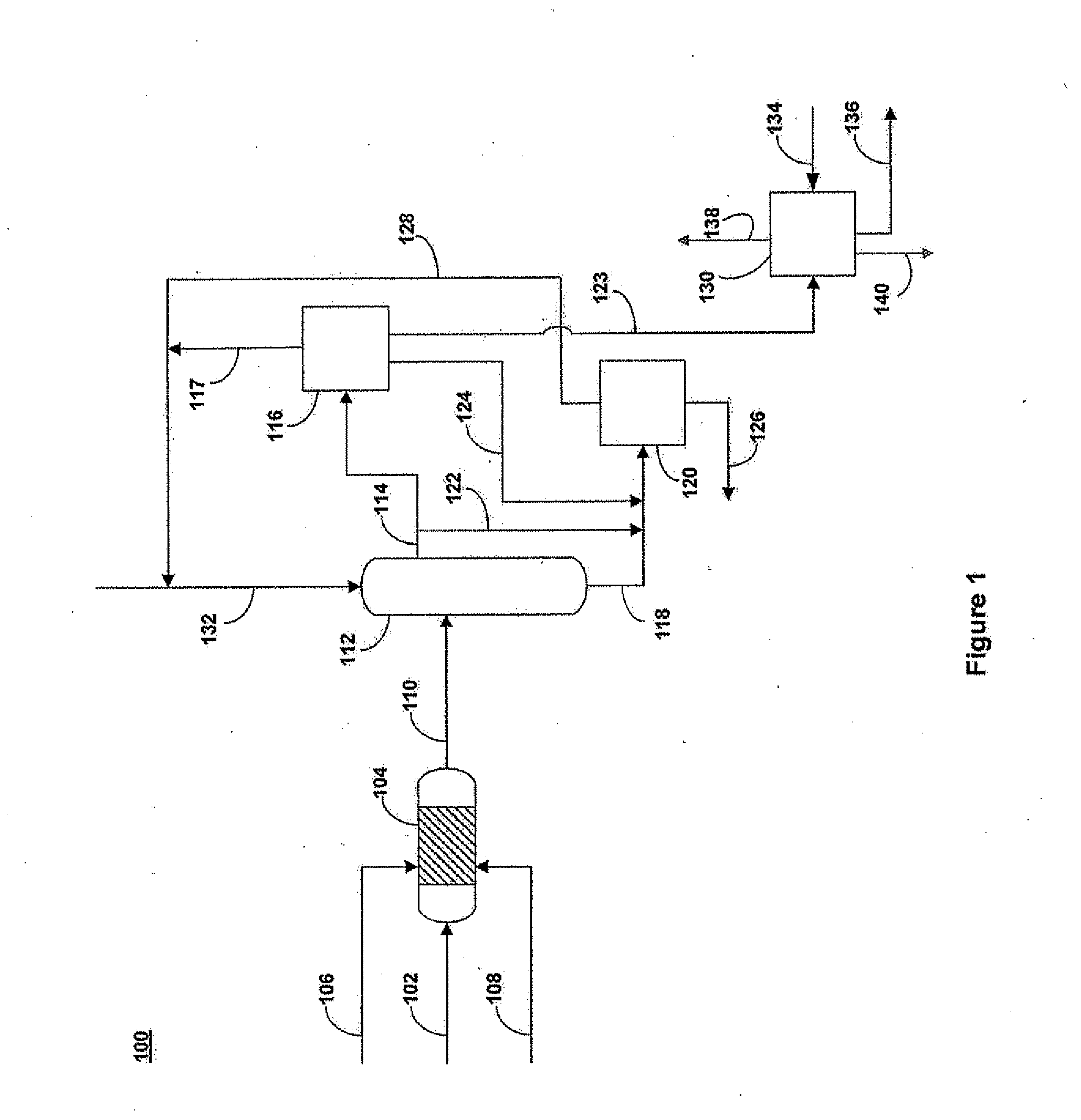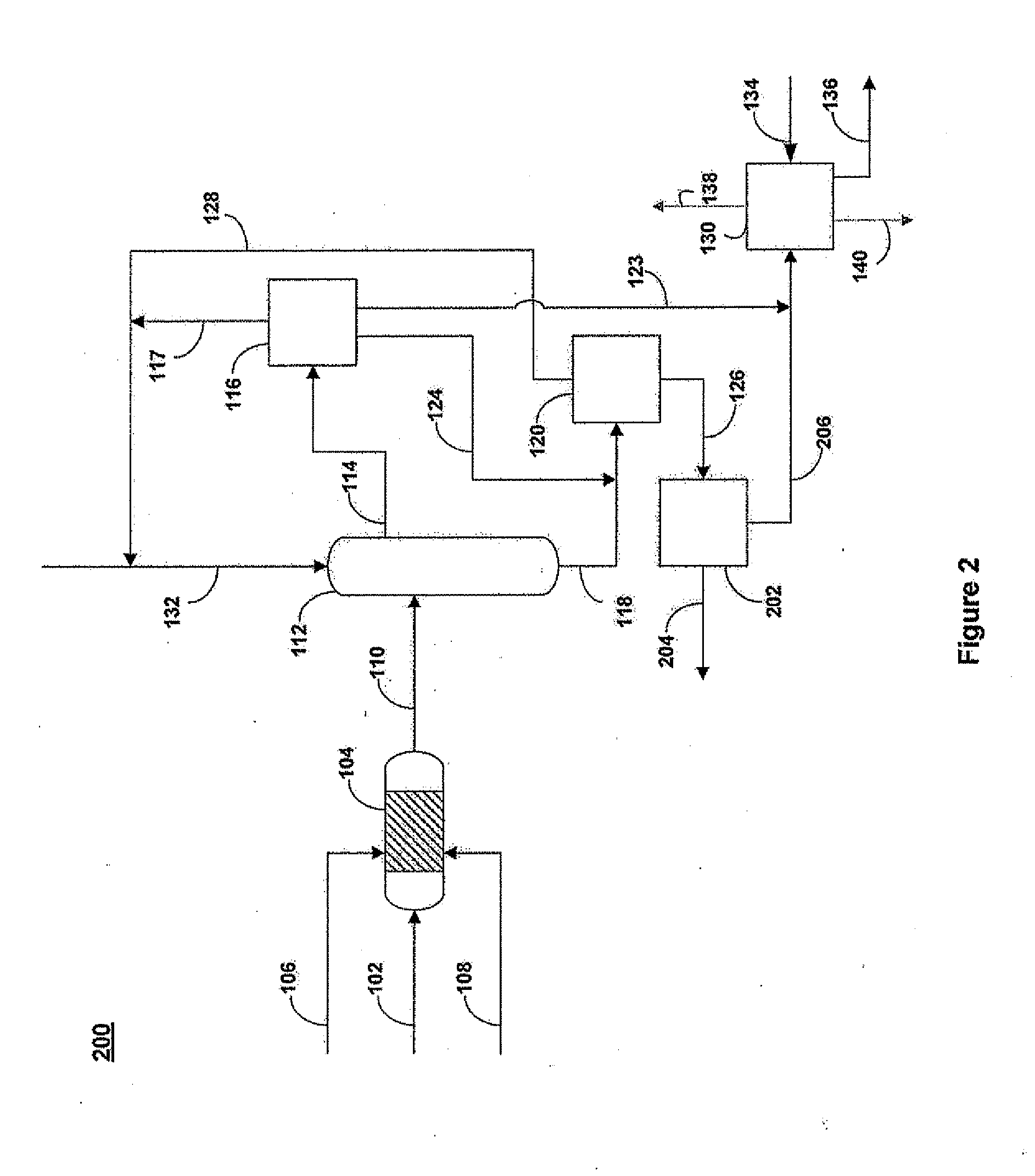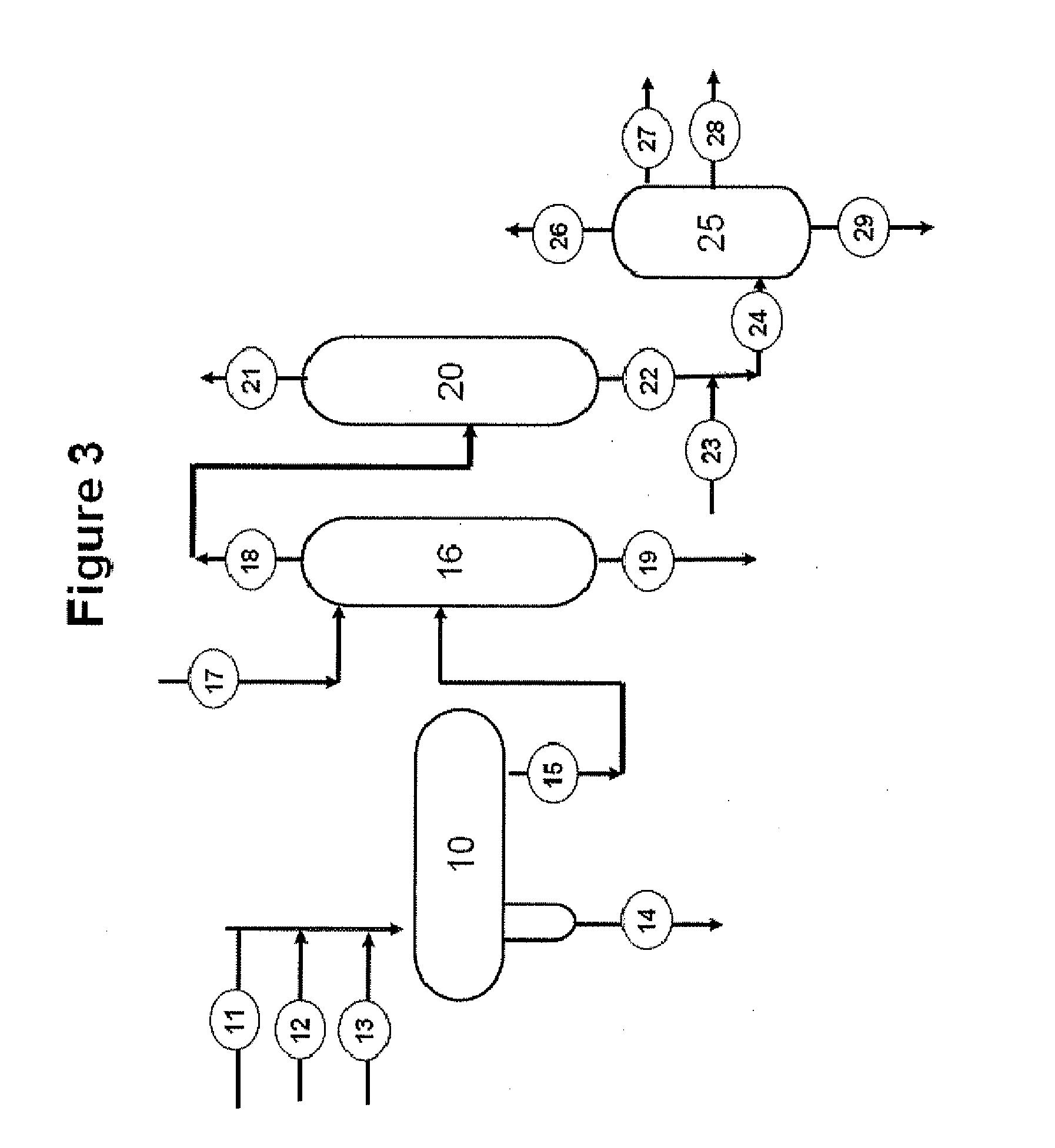Process for Oxidative Desulfurization and Denitrogenation Using A Fluid Catalytic Cracking (FCC) Unit
a technology of fluid catalytic cracking and oxidative desulfurization, which is applied in the field of method and apparatus for recovering sulfur and nitrogen from hydrocarbon feedstocks, can solve the problems of high vapor pressure, low oxygen content of most crude, and high vapor pressure of refined fuels
- Summary
- Abstract
- Description
- Claims
- Application Information
AI Technical Summary
Problems solved by technology
Method used
Image
Examples
example
[0060]FIG. 3 shows the process flow diagram for the oxidative desulfurization (oxidation and extraction steps) and FCC Unit. The vessels 10, 16, 20 and 24 are oxidation, extraction, solvent recovery and fluid catalytic cracking vessels, respectively.
[0061]A hydrotreated straight run diesel containing 500 ppmw of elemental sulfur, 0.28 wt. % of organic sulfur, density of 0.85 Kg / 1 was oxidatively desulfurized. The reaction conditions were as follows:[0062]Hydrogen peroxide:sulfur mol ratio: 4:1[0063]Catalyst: Molybdenum based Mo(VI)[0064]Reaction time: 30 minutes[0065]Temperature: 80° C.[0066]Pressure: 1 Kg / cm2
OxidationStream #11121314Component\streamDieselH2O2CatalystCatalystWasteKg / hKg / hKg / hKg / hWater9748,750MethanolDiesel171,915Organic Sulfur5192Acetic Acid10,64110,641H2O2292Na2WO4 (kg)4,7944,746Total Kg / h172,4348,82315,43524,138
ExtractionStream #151718192122streamOxidizedMethanolMethanolExtractedDieselinSulfones outOilMethanolSulfonesComponentKg / hKg / hKg / hKg / hKg / hKg / hWaterMethanol2...
PUM
 Login to View More
Login to View More Abstract
Description
Claims
Application Information
 Login to View More
Login to View More - R&D
- Intellectual Property
- Life Sciences
- Materials
- Tech Scout
- Unparalleled Data Quality
- Higher Quality Content
- 60% Fewer Hallucinations
Browse by: Latest US Patents, China's latest patents, Technical Efficacy Thesaurus, Application Domain, Technology Topic, Popular Technical Reports.
© 2025 PatSnap. All rights reserved.Legal|Privacy policy|Modern Slavery Act Transparency Statement|Sitemap|About US| Contact US: help@patsnap.com



